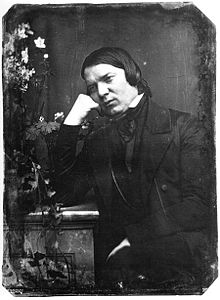The great pianist, Emanuel Ax, performed a great program at San Francisco’s Davies Symphony Hall. The audience was completely packed with music lovers, and Ax has dedicated classical groupies. He certainly made more on October 27. The program contained wonderful music by Beethoven and Schumann, pieces many in the audience thought they knew, and two pieces by Arnold Schoenberg, which Ax helped the audience to know better and enjoy them.
Ax opened with Beethoven’s Piano Sonata No. 13 in E-flat major, Opus 27, no. 1, Quasi una fantasia. In his first 11 sonatas, Beethoven presented sonatas which adhere to the Classical form: 3 or 4 movements which are made of exposition, development, and recapitulation. Beethoven broke the form in Sonatas 12, 13, and 14. The Sonatas number 13 and 14 are put together as Opus 27; both were written in 1801. They are different from each other except for the freedom of composition they share. Ax’s approach to Sonata No. 13 was masterful. This Sonata is seldom given great attention because its sibling, The Moonlight Sonata, is bigger, beautiful in different way, and toweringly difficult. No. 13 could be heard as a sonata with breaks between the movements or played with each running through the next, in fantasia style. It is a bright musical experience which I treasure for exactly the way program author James M. Keller describes it: “this is such a willfully eccentric piece that one may reasonably prefer to consider it a single onrushing conception, more fantasy than sonata.” I choreographed this music as a solo dance and felt that in the final movements the dance would need to just keep going up; so I flew before an eccentric, rhythmic, somewhat folkish finale. It is Beethoven’s imaginative fantasy: playful, joyful, shining a serious light on the sonata.
 Ludwig van Beethoven, composer ( 1770 – 1827)
Ludwig van Beethoven, composer ( 1770 – 1827)
The Piano Sonata No. 14 in C-sharp minor, Opus 27, no. 2, Moonlight brought us into another musical world. This sonata begins with nature at dusk. We hear the night fall into the music, the branches sway, the spirits float above a lake. Through decades after Beethoven’s death, writers wrote that the sonata is about night near a lake with moonlight shimmering on the water. It is nearly impossible to shake the 19th century writers’ impression, now in the 21st. It is emotional while the sounds touch on the clarity of moonlight. This sonata also uses the fantasia style for breaks between movements; that style being not to have a break between movements. That happens between the first movement, Adagio sostenuto, and the second one, Allegretto. Mr. Keller quoted Liszt that the Allegretto is a “flower between two chasms.” There is a normal break before the Presto agitato ending. We are not left Romantically alone by a lake, perhaps feeling just a little glum, aware of the beauty around us, but realizing one can feel the spirits floating around the dark pines only so long. The final movement picks up the rhythms with force. It dances to the quickly rising and falling music as moonlight beams. Emanuel Ax played the delicate, powerful, gorgeous music with perfection. He seems to understand what is in the depths of the music.
 Arnold Shoenberg, composer, (1874 – 1951)
Arnold Shoenberg, composer, (1874 – 1951)
Fortunately for the audience, Emanuel Ax spoke to us to explain what happens in the two selections by Schoenberg. The first one, Drei Klavierstucke, Opus 11 (1909), was played between the two Beethoven sonatas. The second opened the second half of the concert. Ax played Sechs kleine Klavierstuck, Opus 19 (1911) before Schumann’s Fantasy in C major, Opus 17. He advised the audience that one does not need to think these approaches to music require mathematical brilliance. Instead, Schoenberg lets expression, emotion, even the concept of free association into the tightly composed sounds. That changed everything about listening to Schoenberg. In both pieces, I tried to hear the single musical sound and imagine what it was. Both of the pieces were intensely packed with memories, visions, experience. Schoenberg’s thoughts and attitudes were there for us to look at from every direction and begin to understand that sound can be real atoms of life.
 Robert Schumann, composer, (1810 – 1856)
Robert Schumann, composer, (1810 – 1856)
It made me happy to know that Schumann’s Fantasy in C major, Opus 17 was the anchor of the program. It is a big work. Passionate, poetic, inventive music rolls forward and embraces its creator. He is forever the Romantic composer of the Romantic era and the romantic man who was in love with Clara Wieck. Her father forbid her to see her dear Robert. She was widely recognized as the finest pianist of Europe. Her father sent her off on another tour to Dresden to keep her well known and away from her love. That was 1836. In 1838, he wrote to her about the Fantasy he was writing: “the first movement is the most passionate thing I have ever composed –a deep lament for you.” The next year he wrote, “In order to understand the Fantasie you will have to transport yourself into the unhappy summer of 1836, when I renounced you.” While their married life was a triumph for both of them, I was happy to hear this major work from Schumann because some classical music fans seem to be fascinated by Schumann more for the mysteries of his mental illness than the grand music he made. I think he is being championed by several artists and conductors now. Schumann described two imagined characters in his essays and compositions. Florestan is the more aggressive one, and Eusebius is often off in a dream or aligned with more tranquil music. In this Fantasy, the Florestan rules the first movement and Eusebius is also there for a section named The Sound of a Myth. The poetry of this music is not always dreamy and calm; poetry can be powerful, too. Schumann placed a poem by Friedrich Schlegel at the beginning of this score. “Through all the sounds in earth’s motley dream, one soft note can be heard by him who listens stealthily.” For the pianist, this Fantasy is an extreme challenge to the best of technicians. Emanuel Ax played it as Schumann would want it to be. It was thrilling.
The audience went crazy for Emanuel Ax. He gave us two encores. After several curtain calls, he played Schubert’s Standchen, a song which Franz Liszt transcribed for the piano. Everyone continued applauding. Ax left again and came back to play Chopin’s Nocturne Opus 27, No. 1. It was beautiful. No one wanted to leave.

 Emanuel Ax, 2015
Emanuel Ax, 2015